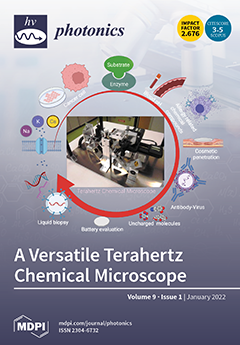The methylammonium lead halide solar cell has attracted a great deal of attention due to its lightweight, low cost, and simple fabrication and processing. Despite these advantages, these cells are still far from commercialization because of their lead-based toxicity. Among lead-free perovskites, cesium-titanium
[...] Read more.
The methylammonium lead halide solar cell has attracted a great deal of attention due to its lightweight, low cost, and simple fabrication and processing. Despite these advantages, these cells are still far from commercialization because of their lead-based toxicity. Among lead-free perovskites, cesium-titanium (IV) bromide (Cs
2TiBr
6) is considered one of the best alternatives, but it faces a lack of higher PCE (power conversion efficiency) due to the unavailability of the matched hole and electron transport layers. Therefore, in this study, the ideal hole and electron transport layer parameters for the Cs
2TiBr
6-based solar cell were determined and discussed based on a simulation through SCAPS-1D software. It was observed that the maximum PCE of 20.4% could be achieved by using the proper hole and electron transport layers with optimized parameters such as energy bandgap, electron affinity, doping density, and thickness. Unfortunately, no hole and electron transport material with the required electronic structure was found. Then, polymer NPB and CeO
x were selected as hole and electron transport layers, respectively, based on their closed electronic structure compared to the simulation results, and, hence, the maximum PCE was found as ~17.94% for the proposed CeOx/Cs
2TiBr
6/NPB solar cell.
Full article





